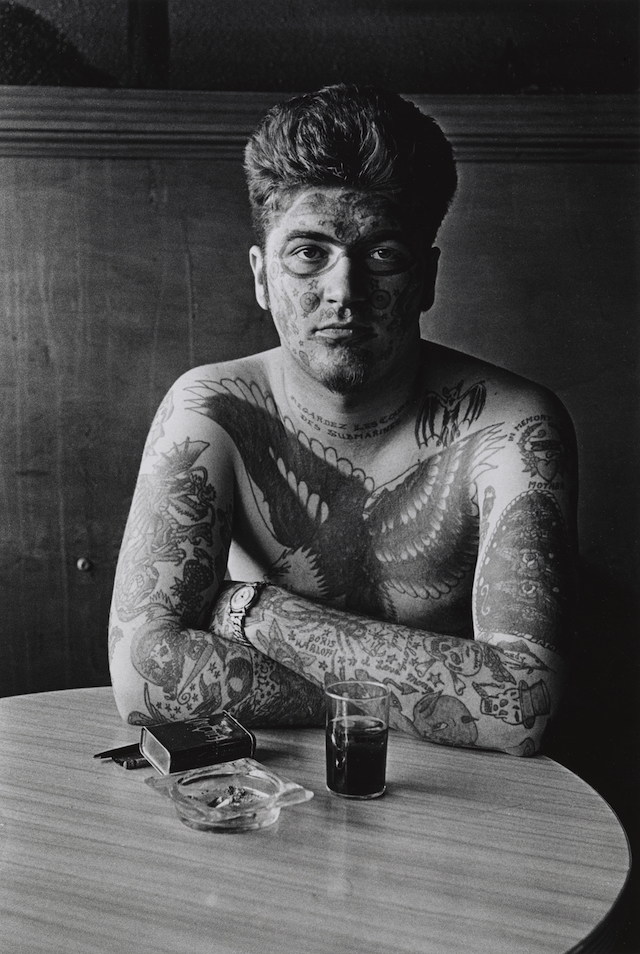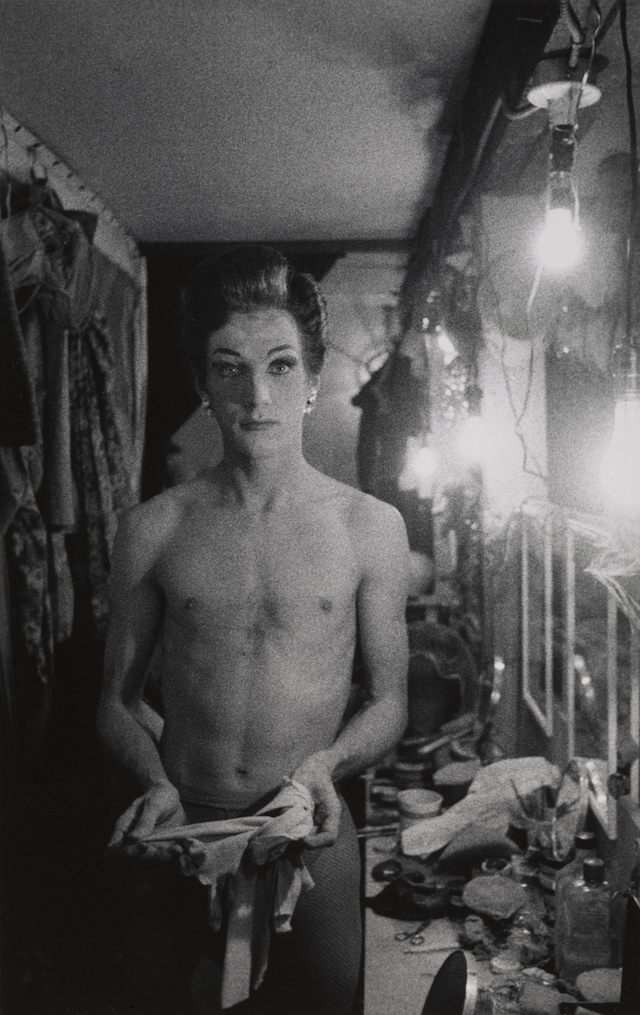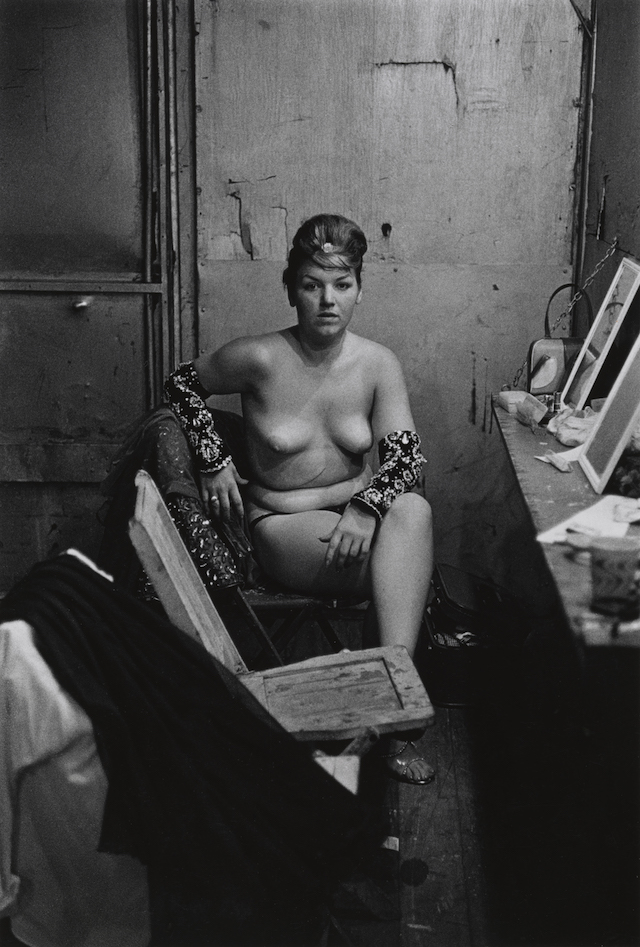Jacob Charles Wilson examines the formative first half of the photographers career, filled with strangers on the fringes of society

Diane Arbus’ peering lens is relentless, it goes everywhere you’re not supposed to. It wants to get inside people and watch them live their lives. At the same time it asks the reverse, what of Arbus’ life, what did she see in these scenes? In the beginning at the Hayward Gallery introduces her neglected 35mm work made between 1956 and 1962, the first seven years of Arbus’ photographic life. When she stalked the streets of New York, from Time Square and Coney Island, seeking out encounters with the margins of society.
These photographs mark a sharp contrast to the medium format style she later adopted. They’re dark, heavy, indistinct. Time is held still, somewhere around midnight. They’re illuminated only by an overcast sky, a single lightbulb in a dank apartment, or the humming glow of a television. Objects dissolve in the rough grain of the photographic print. What is present and absent merges and fantasy takes hold. Arbus’ city is unfamiliar, filled with strangers and masks, the dead and dying and those in-between – her favourite subject – the people she called ‘freaks’, people not of society: the ugly, and insane, giants and dwarves, transsexuals, sex workers, clowns, fire eaters, corpses.

This is why Arbus’ work was known and hated. Any work that tests the limits of society and normality will stand out and be criticised. The critic Susan Sontag expressed ethical concerns about her relationship with her subjects, that she was exploiting these sensational people. Other critics suggested that Arbus was even attracted to these people she photographed. Certainly, eroticism plays a part in many of her most memorable photographs and she also talked of the licentiousness of photography. “I always thought of photography as a naughty thing to do – that was one of my favourite things about it, and when I first did it, I felt very perverse.”
I get the sense that at the Hayward plays to this voyeuristic tendency, that in seeing the show we’re supposed to inhabit Diane Arbus. The photographs are scattered throughout the gallery, mounted at eye height on columns that divide the space into a grid like the streets of NYC. Each picture forms an imaginary peephole into her world. I found myself walking undirected about the space, moving from view to view, a constant photographic search. It’s like you’re in the city, seeking out, stalking, catching glimpses. It cultivates a sense of unnerving familiarity of her view, her eye.
This familiarity is a fantasy, there’s an essential gap between our understanding and Arbus’. We will never totally understand her motivation, each attempt becomes introspection. We project our own fears onto these photographs, these sheets of paper, and read them back so that the reactions to her work reveal more than the work itself. Perhaps the biggest fear is that we might be the stranger who causes others to stare. “You see someone on the street,” Arbus wrote, “and essentially what you notice about them is the flaw.”

By 1962 Arbus lessened the focus on freaks, at the same time she switched to a medium format Rolleiflex camera and influenced by the work of August Sander she adopted a calmer, clearer, more commercially viable style of photography. But with this goes all the joy and excitement of her earlier work, its nowhere nowhere near as fun, gritty, or inventive as the earlier work. Around the same time Arbus began to photograph nudist colonies. In these pictures, normality and freakishness are reversed, with nudists trying to create a semblance of rational society amongst a world at the height of the Cuban Missile Crisis, facing the very real threat of total nuclear annihilation.
She later described the rules of these colonies with a palpable sense of disappointment, as if these people couldn’t live up to her transgressive dreams. At one place any kind of sexual attraction or staring was banned, “you were allowed to look at people but you weren’t allowed to somehow make a big deal of it”, while she described another as resembling “The garden of Eden after The Fall’, as if humanity had been forgiven and told, ‘Stay. Stay in the Garden. Get civilised. Procreate. Muck it up’” and paradise became nude bodies, mud, and trash.
What did Diane Arbus see? For many years this has been hard to answer, the combination of her early death, the contempt in which her work, and her daughter’s wish for privacy led to few exhibitions and few books. This show allows a new round of introspection, a new engagement with these images. It’s true that Arbus pictures the worst, the most extreme, the nightmarish, she creates a modern Gothic horror. It’s a pessimistic view of society, and why not? This is a society where people must degrade themselves to gain a semblance of respect, while others think nothing of wearing a ‘bomb Hanoi’ badge. Arbus’ vision is ruthless, in this world there’s no salvation in freakishness nor normality.
diane arbus: in the beginning is at the Hayward Gallery until May 6th 2019